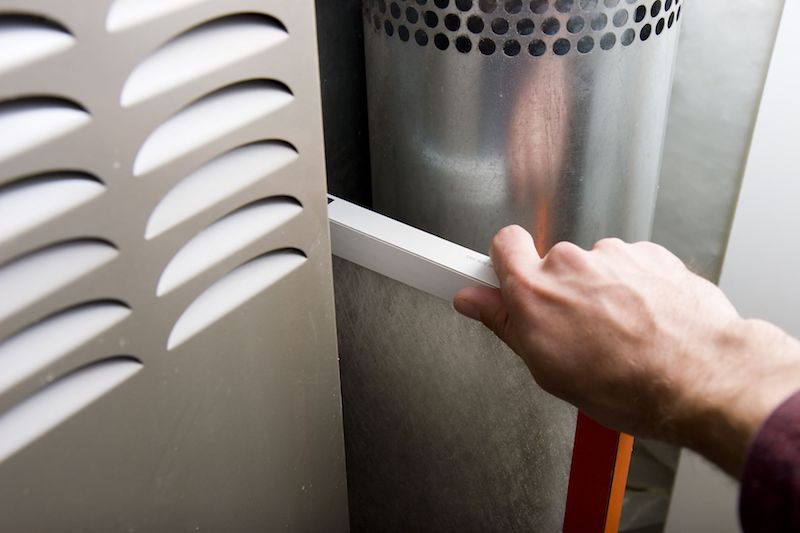
If you’re uncertain whether your Shamokin and Sunbury home has poor indoor air quality (IAQ), it probably does.
We are indoors a lot. In reality, we’re inside up to 90% of the time, according to the U.S. Environmental Protection Agency. And the air inside homes could be 2–5 times more polluted than outdoors, which might create long-term health problems.
Most Common Sources of Poor IAQ
We’ve compiled a list of the most frequent sources of inferior IAQ, the troubles they create and how you can take care of these indoor air pollutants. If you’re troubled by the air inside your home, we recommend talking with a pro like LTS Plumbing & Heating Inc. about which solutions are best for your home.
Volatile Organic Compounds
Volatile organic compounds, or VOCs, are vapors released by common household products.
They’re found in paint and stains along with:
- Furniture
- Carpet
- Building materials
- Cleaning products
- Cosmetics
- Air fresheners
- Candles
When these vapors accumulate indoors, they may irritate your eyes, nose and throat. They may also result in headaches and nausea. Regardless of whether your residence is in a rural or industrial area, an EPA study found indoor levels of these pollutants can be 2–5 times worse than the air outdoors.
Always adhere to the manufacturer’s directions when applying paint or spraying cleaning products. Cracking a window can help chemicals disappear faster.
Air purification systems can also improve your air. This system partners with your heating and cooling system to clean indoor air. When looking for a system, ensure it’s specifically made to eliminate VOCs.
Dust and Pet Dander
Dust and pet dander can trigger health problems like asthma and allergies, especially when it continually gets recirculated by your home’s comfort unit. While you can vacuum more regularly and buy an improved air filter, an air filtration system might be a better fit.
This unit hooks to your comfort equipment to deliver strong filtration. Some kinds have hospital-level filtration for removing particles and bioaerosols.
Persistent Odors
New homes are securely sealed to boost energy efficiency. While this is good for your heating and cooling bill, it’s not ideal for your IAQ.
Stale odors can stay around for a greater amount of time since your house is pulling in reduced fresh air. Since keeping your windows open all year-round isn’t an option, here are two methods you can make your indoor air smell cleaner.
An air purification system is installed in your HVAC system to wipe out odors before they are redistributed. Look for one with a carbon filter and the ability to wipe out dangerous VOCs. These systems can also help keep your household healthy by wiping out most bacteria and common allergy triggers like pollen and mold spores.
A ventilation system takes out musty indoor air and substitutes it with clean outdoor air. There are two types of units (heat recovery and energy recovery), so check with our professionals for more details on which solution is ideal for your residence.
Unsteady Humidity
It’s important your residence’s humidity keeps even. Air that has too much moisture can lead to mold, while dry air can create respiratory troubles.
Our specialists suggest 40–50% for top comfort. To keep yours in balance, think over getting a whole-home humidifier or whole-home dehumidifier with your comfort equipment.
In place of having to lug a humidifier from room to room, this product delivers consistent humidity around your house.
Carbon Monoxide
Carbon monoxide is colorless gas you can’t smell. It’s a byproduct of insufficient combustion in fuel-burning appliances, like gas heating systems, water heaters or fireplaces.
It causes a severe health risk. In small levels, it can create flu-like symptoms like headaches and nausea. It could be fatal in large levels.
We suggest annual furnace maintenance to double-check your unit is running smoothly. This job allows our professionals to discover issues before they get bigger, including malfunctions that can create carbon monoxide leaks.
The best approach to keep your residence free of carbon monoxide is to put in detectors. These alarms should be on every floor by bedrooms and living spaces.
Better Your House’s Air Quality with the LTS Plumbing & Heating Inc. Experts
Aware that your house has inferior air quality but not sure how to enhance it? Or unsure which product is a good fit for you? Give our approachable HVAC professionals a call at 570-648-0748 or contact us online right away. With free estimates and pro support, we’ll help you locate the best solution for your home and budget.
